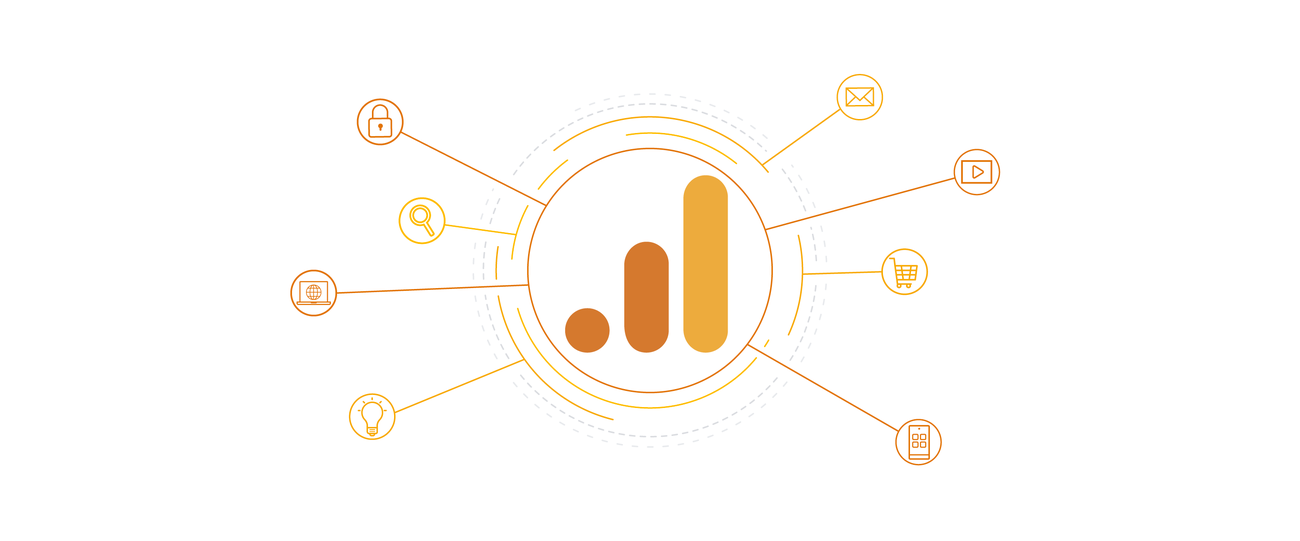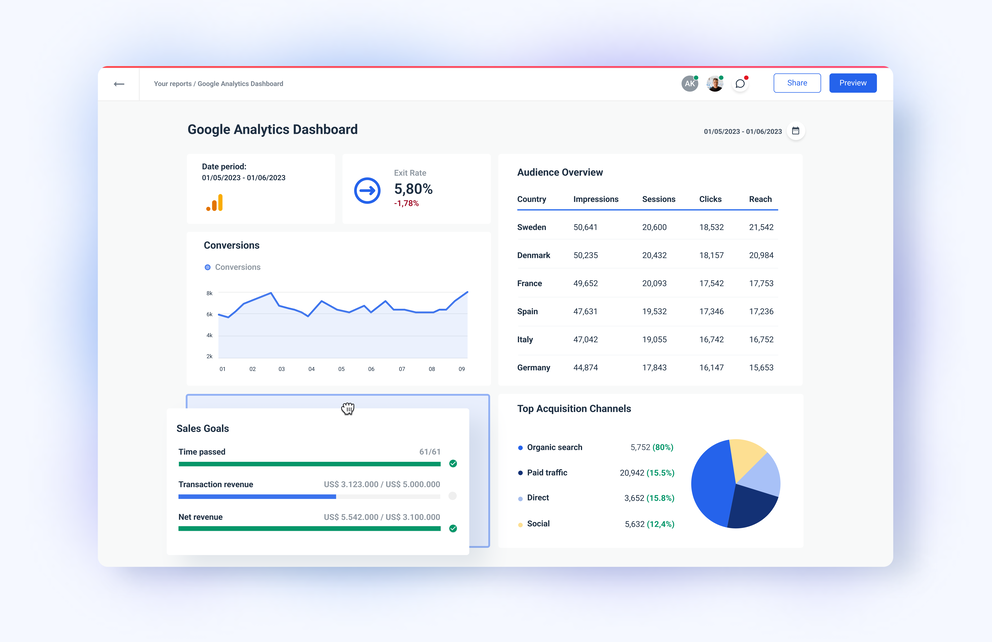Necessary Insights on When Does the Google Analytics Tracking Code Send an Event Hit to Analytics for Accurate Reporting
Necessary Insights on When Does the Google Analytics Tracking Code Send an Event Hit to Analytics for Accurate Reporting
Blog Article
Master Web Site Insights With Accurate Google Analytics Tracking Code
The efficient application of Google Analytics depends upon the specific application of its tracking code, a basic step usually neglected by web site proprietors. This relatively basic JavaScript bit, when properly placed, becomes the foundation of information collection, offering insights right into individual behavior and site efficiency. Nevertheless, difficulties can arise throughout arrangement, potentially skewing the data and leading to mistaken decisions. Understanding these details is necessary for maximizing the advantages of analytics. What are the typical pitfalls that could threaten your tracking initiatives, and exactly how can you ensure precision in your method?
Understanding Google Analytics Basics
Google Analytics is an important tool for web site owners and marketers, giving vital insights into customer actions and site efficiency. At its core, Google Analytics accumulates data regarding visitors to a site, permitting users to evaluate metrics such as website traffic resources, user interaction, and conversion prices. Recognizing these fundamentals is vital for optimizing a site's efficiency and boosting customer experience.
The system employs cookies to track interactions, tape-recording information such as web page sights, session periods, and bounce prices. This details is accumulated and offered through customizable dashboards, allowing individuals to visualize fads in time. Trick efficiency indicators (KPIs) can be kept an eye on, such as the overall number of customers, new versus returning site visitors, and the geographical distribution of the audience.
Additionally, Google Analytics offers segmentation functions, enabling users to isolate particular traffic sources or user demographics for more targeted evaluation. By understanding these fundamental components, site owners can make educated choices regarding content approach, advertising and marketing projects, and general site improvements. Ultimately, understanding Google Analytics basics is essential for leveraging data to drive development and accomplish company purposes properly.
Establishing Up Your Tracking Code

Replicate the given monitoring code and paste it into the HTML of your site. Ideally, this code should be placed in the header area of every web page you wish to track. This guarantees that the tracking code lots prior to any type of other web content, permitting it to catch data accurately. If you are using a material monitoring system (CMS) like WordPress, there are plugins offered that simplify the assimilation procedure.
After installation, validate that the tracking code is working appropriately by making use of Google Tag Assistant or the Real-Time records in Google Analytics - when does the google analytics tracking code send an event hit to analytics?. This action is vital to validate that your information collection is precise and energetic, establishing the foundation for insightful evaluation
Usual Tracking Code Issues
Many website proprietors come across common problems with their Google Analytics tracking code that can prevent information collection and analysis. One widespread concern is improper installment. This may happen when the tracking code is positioned in the incorrect area of the web site's HTML, usually bring about insufficient or absent information. Additionally, having several instances of the monitoring code on a single page can result in inflated metrics, as individual communications could be counted greater than as soon as.
One more concern develops from the usage of advertisement blockers, which can avoid the monitoring code from implementing completely, therefore skewing information. when does the google analytics tracking code send an event hit to analytics?. Additionally, failing to configure filters correctly can bring about the exclusion of vital web traffic sources or the inclusion of unwanted recommendation spam, misshaping the data accumulated
Site owners might also ignore the importance of monitoring code updates, particularly when migrating to Google Analytics 4 (GA4) from Universal Analytics. Last but not least, inadequate testing before releasing changes can result in unseen errors in the tracking code, better making complex information reliability. Resolving these usual problems is important for guaranteeing precise tracking and informative analytics.
Analyzing Website Information Efficiently
Accurate information collection is only the first step in leveraging Google Analytics; the real value hinges on properly evaluating that data to drive informed decision-making. To achieve this, it is necessary to recognize vital performance indications (KPIs) that straighten with your business goals. Focus on metrics such as conversion prices, user engagement, and traffic resources, as these will certainly provide insights right into user habits and the general effectiveness of your internet site.
Making Use Of Google Analytics' segmentation attributes enables a much deeper understanding of your target market. By damaging down data into details demographics, habits, and website traffic networks, you can uncover patterns and patterns that educate targeted methods. Executing custom reports and dashboards can streamline this procedure, enabling fast accessibility to essential data.
In addition, consistently reviewing data trends with time aids to identify anomalies and possibilities for enhancement. Make use of visualization tools to present data in a quickly absorbable format, promoting much more efficient communication with stakeholders. Eventually, the ability to examine site data properly encourages companies to make tactical choices that enhance customer experience, maximize marketing efforts, and drive growth.

Best Practices for Accurate Tracking
Applying efficient monitoring methods is important imp source for obtaining trusted data in Google Analytics. To ensure precise monitoring, start by properly installing the Google Analytics tracking code on every page of your website. This can be achieved through a tag manager or by straight embedding the code right into the HTML.
Next, configure your Google Analytics account to omit inner traffic. This can be done by setting up filters that recognize and eliminate check outs from your company's IP address, thereby avoiding manipulated information. Additionally, make use of occasion monitoring to keep track of certain customer communications, such as downloads or video clip plays, which basic page views might forget.
Regularly investigate your tracking configuration to validate that all features, such as goals and ecommerce tracking, are functioning effectively. Establish a constant naming convention for your events and projects to facilitate much easier try this out coverage and evaluation.
Finally, take into consideration leveraging UTM criteria for projects to get understandings right into the efficiency of different advertising efforts. By following these ideal try this techniques, you can boost the precision of your information collection and evaluation, eventually causing more educated decision-making for your website.
Verdict
By making certain the monitoring code is appropriately placed and regularly examined, web site owners can catch vital customer interaction information, thus promoting the identification of key efficiency indicators. Eventually, a robust tracking structure enhances the capacity to drive involvement and improve general website performance.

Inadequate testing before releasing adjustments can result in unseen mistakes in the monitoring code, additionally complicating data integrity.Carrying out efficient tracking techniques is vital for acquiring reliable information in Google Analytics. By ensuring the monitoring code is appropriately placed and on a regular basis investigated, web site owners can record vital user communication information, thus helping with the identification of crucial efficiency signs.
Report this page